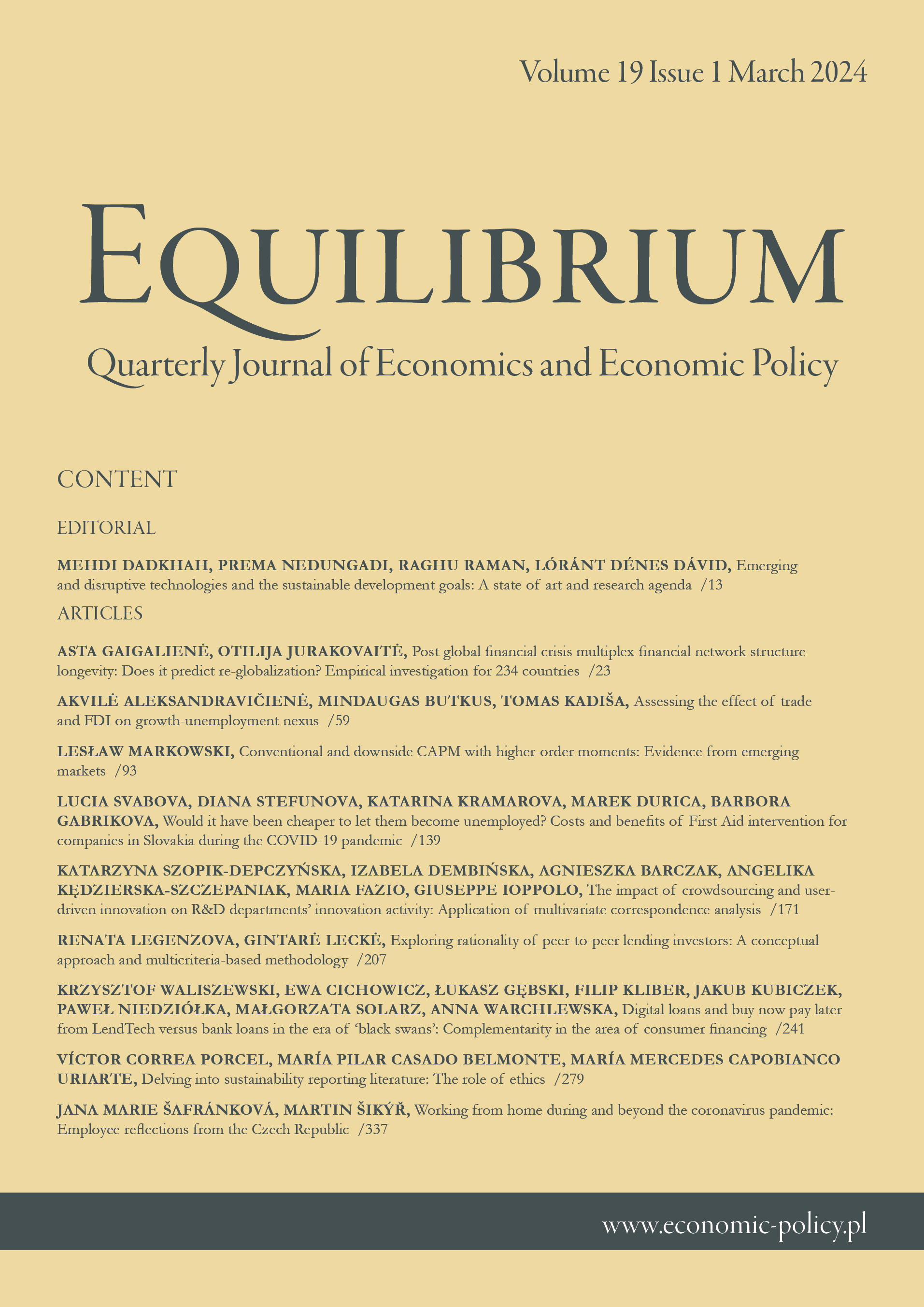分布式账本技术对单一欧元支付区发展的影响
IF 6.2
Q1 ECONOMICS
Equilibrium-Quarterly Journal of Economics and Economic Policy
Pub Date : 2017-09-30
DOI:10.24136/EQ.V12I3.28
引用次数: 4
摘要
研究背景:2016年结束了国家支付服务向SEPA工具迁移的时期。然而,与此同时,有些问题显然仍未得到解决。克服它们需要找到合适的技术解决方案。金融部门目前正在探索分布式账本技术(DLT)的潜力,它的实施可能会在各个方面影响SEPA计划。本文的目的:本文的目的是确定DLT转移到银行业可能对未来SEPA的运作产生的潜在影响。本文介绍了环境保护总局的设想和项目的现状,以及DTL的概念。它描述了技术转让对银行业的影响,并将目前运行的SEPA计划与基于DLT的计划进行了比较。它还指出了新技术实施的机会和威胁,并检查了它们对SEPA的意义。方法:本文采用定性分析与定量分析相结合的方法。描述性统计的要素已被用来描述环境保护方案主要支柱的运作特征。最后的结论是基于对SEPA方案和已开发的DLT应用的比较分析。发现和增值:现有的问题可以通过补充目前基于DLT的应用程序运行的SEPA支付方案来解决。随后将开发的系统将提供所需的实时处理和全球覆盖。他们还将扩展SEPA计划的功能,使其能够转移其他货币。这项技术的实施不仅会产生新的金融产品,而且首先会创造新的商业模式。因此,我们可能会对目前运行的环境保护计划进行修改,基于它们的补充,而不是在短时间内完全替换。本文章由计算机程序翻译,如有差异,请以英文原文为准。
The Impact of the Distributed Ledger Technology on the Single Euro Payments Area Development
Research background: The year 2016 ended the period of the migration from national payment services to the SEPA instruments. At the same time, however, it has become apparent that some problems remained unresolved. Overcoming them requires finding suitable technological solutions. The potential of the distributed ledger technology (DLT) is currently being explored by the financial sector and its implementation may affect the SEPA schemes in a variety of dimensions. Purpose of the article: The aim of the article was to determine the potential impact that the DLT transfer to the banking sector may have on the functioning of the SEPA in the future. The paper presents SEPA’s assumptions and the current status of the project as well as the DTL’s concept. It describes the technology transfer implications for the banking industry and compares the SEPA schemes currently operating with those based on the DLT. It also indicates the opportunities and threats that are the consequence of the new technology implementation and examines their significance for the SEPA. Methods: In the article, a qualitative analysis is supplemented with a quantitative one. Elements of descriptive statistics have been used to characterize the functioning of the main pillars of the SEPA schemes. The final conclusions are based on the comparative analysis of the SEPA schemes and developed DLT applications. Findings & value added: The existing problems might be solved by supplementing the SEPA payment schemes currently operating with the applications based on the DLT. The systems that will be subsequently developed will provide the required real-time processing and a global reach. They will also extend the functionalities of the SEPA schemes with the ability to transfer other currencies. The implementation of this technology will result not only in new financial products but, first of all, in creating new business models. Consequently, we may expect a modification of the currently operating SEPA schemes, based on their supplementation rather than total replacement in a short time frame.
求助全文
通过发布文献求助,成功后即可免费获取论文全文。
去求助
来源期刊
CiteScore
9.20
自引率
3.50%
发文量
28
审稿时长
36 weeks
期刊介绍:
Equilibrium. Quarterly Journal of Economics and Economic Policy is a scientific journal dedicated to economics, which is the result of close cooperation between the Instytut Badań Gospodarczych/Institute of Economic Research (Poland) and Polish Economic Society and leading European universities. The journal constitutes a platform for exchange of views of the scientific community, as well as reflects the current status and trends of world science and economy.
The journal especially welcome empirical articles making use of quantitative methods in: Macroeconomics and Monetary Economics, International Economics, Financial Economics and Banking, Public Economics, Business Economics, Labor and Demographic Economics, Economic Development, and Technological Change, and Growth.
Current most preferable topics and special issues:
The economics of artificial intelligence: business potentials and risks;
Digitalization and entrepreneurship in economics;
Sustainable socio-economic development, environmental and ecological economics;
Transition in the energy market (improving energy efficiency, alternative energy sources, renewable energy, energy security).

 求助内容:
求助内容: 应助结果提醒方式:
应助结果提醒方式:


